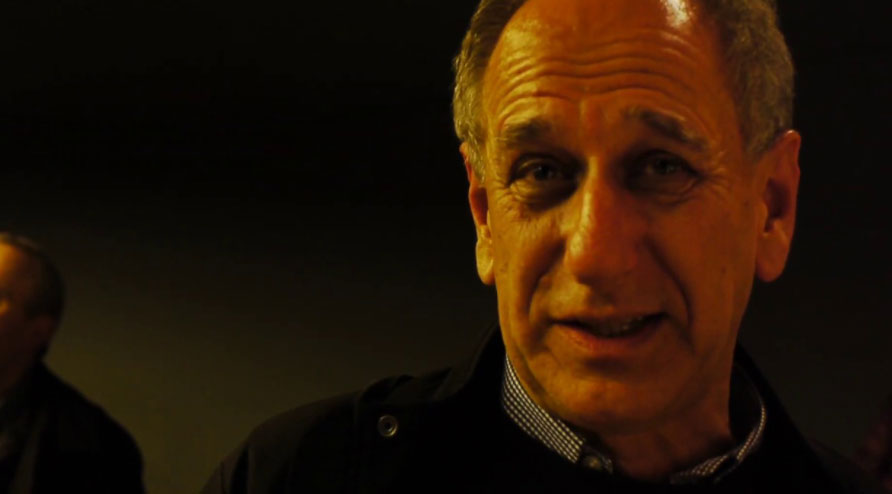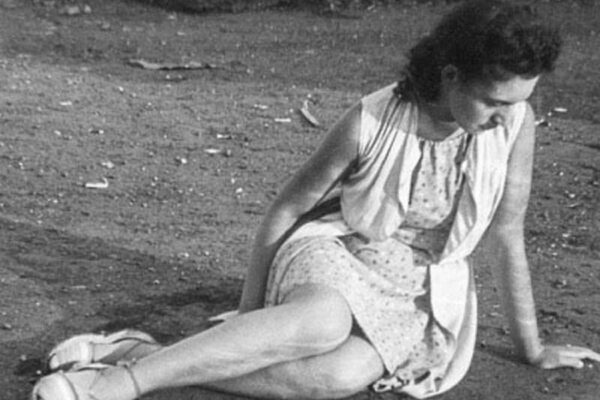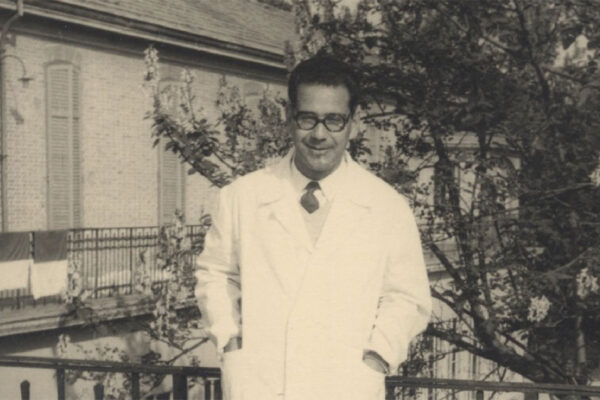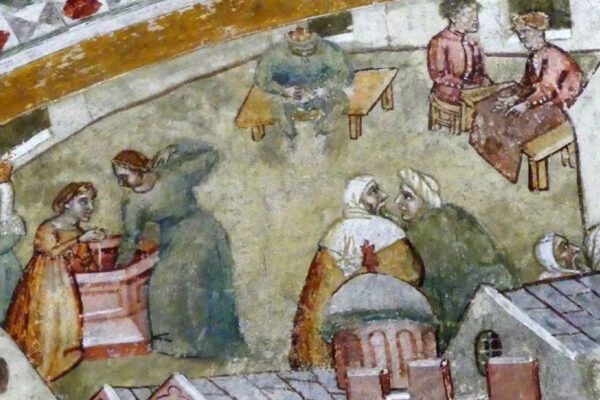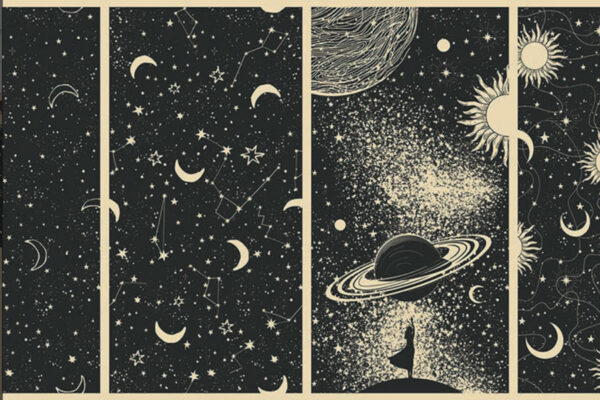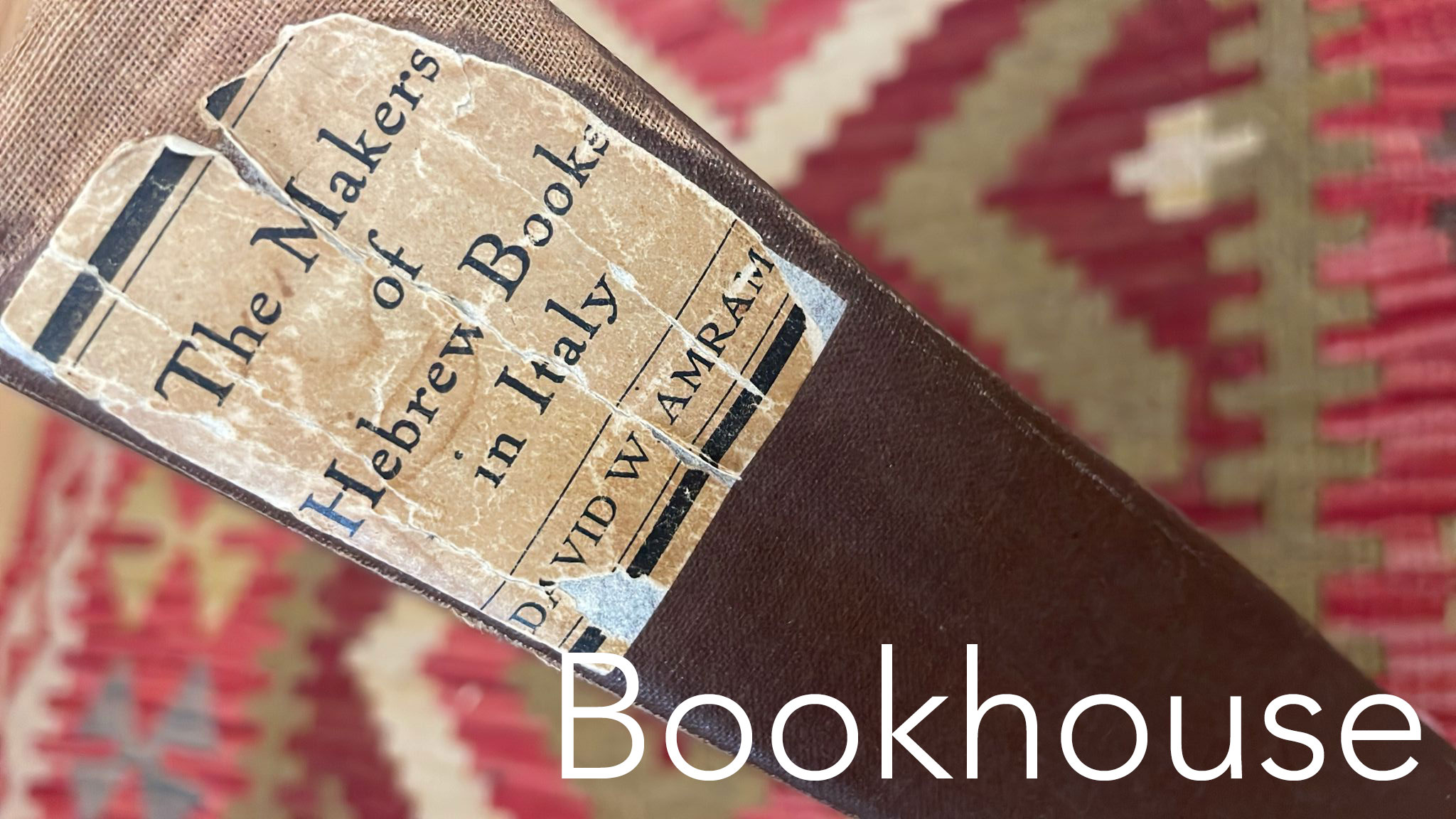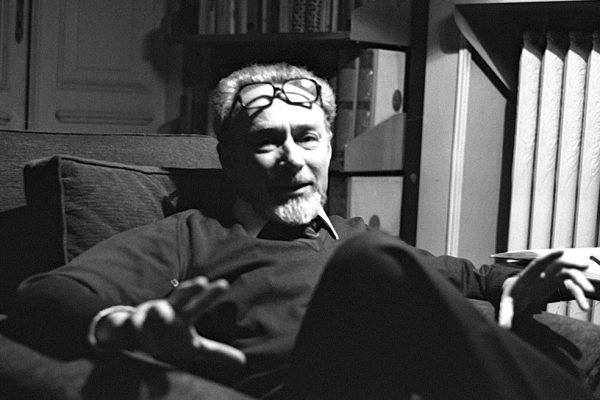The New Mobility of Italian Jewish Press: Pagine Ebraiche
Alessandro Cassin interviews Guido Vitale
In a time when media empires are crumbling and journalism seems like a dying profession, the Italian Jewish world is going against the grain.
In the fall a new Italian monthly reached newsstands nationwide: Pagine Ebraiche (Jewish Pages) produced by journalist Guido Vitale for UCEI, the Union of Italian Jewish Communities.
Vitale appears to be an extremely nimble David among the slow-moving Goliaths of traditional print press. With the scrappiness of early Jewish entrepreneurs and bare-bone resources used to the max, he invented a smart, provocative Jewish monthly with across-the-board appeal.
Pagine Ebraiche is the flagship of a new and ambitious program, which includes an online Jewish information portal, Moked.it, the daily newsletter, l’Unione Informa, a specialized press review, and, as of this month, HaTikwa, the magazine of Italian Jewish Youth. Through these bold initiatives, Mr. Vitale and his collaborators have established a dynamic Jewish media presence able to engage in constructive dialogue with non-Jewish Italians. In the few months since its inception, Pagine Ebraiche, which reaches all members of Parliament, media personalities as well as prominent cultural figures, has proved to be a vital forum with contributions by noted intellectuals such as Anna Foa, Sergio Della Pergola, Vittorio Dan Segre, David Bidussa and Elena Loewenthal.
As conceived by Vitale, its role is not to replace the existent Jewish press, but rather “to speak to the external world”.
Pagine Ebraiche (www.paginebraiche.it) published in color, with a cover price €3, features well-written news reports, essays, commentaries, cultural pieces, interviews, and more. Among other things, the first issue featured an unpublished essay by Primo Levi about the role of images in the elaboration of memories.
Increasingly in recent years, Italians have been fascinated by Jewish culture. The proliferation of festivals devoted to Jewish themes, debates, plays, concerts, even food-tasting events throughout the year, seems disproportionate to the demographics. Italy’s estimated 30.000 Jews remain a very small, if culturally overexposed minority in a country of 62 million people. Jews have lived in Italy since ancient Roman times; the Jewish community in Rome is the oldest continuous Jewish presence of the Diaspora. Yet for many Italians, their Jewish fellow citizens they remain little known.
Guido Vitale, 51, was born in Rome but has spent most of his life Trieste. After 3 years in the US, he moved back to Milan. The headquarters of Pagine Ebraiche is in Rome, but his small editorial staff is distributed between Florence, Milan, Turin, and Venice. He is a man on the go.
Alessandro Cassin: What was your day like today?
Guido Vitale: Today was hectic, but not atypical: in the morning I was in Trieste, by noon I went to Milan for the printing of the first issue of HaTikwa, spent the day in meetings there and in the evening joined my staff in Rome. This happens often, my friends joke that I live on trains.
AC: I guess it’s no coincidence that in the first issue of Pagine Ebraiche, you had a story about Italian high-velocity trains …
GV: These trains are transforming Italy, or at least the way one can live here. High-speed trains, which I ride almost daily, allow travel from Rome to Milan in 3 hours, from Florence to Bologna in 30 minutes, and so on. This becomes more significant if you consider that the majority of Italian Jews live precisely along the line connecting Rome, Florence, Milan and Venice, which are all linked via high-velocity trains. My editorial staff takes full advantage of this new mobility, allowing all of us to converge in Milan for lunch and then return to our respective cities for the rest of the work day.
AC: Who is the target for a magazine like Pagine Ebraiche?
GV: The short answer is we are still finding out. My feeling is that there is a vast reservoir of interest in Jewish themes on the part of the non-Jewish public opinion. This has many different reasons. One can find evidence of this in a whole range of phenomena, not least the remarkable success of Israeli contemporary literature among Italian readers.
My contention is that this interest in Jewish art and culture could also generate an interest for the world of media and information, which up to now has not been explored. In other words, I am convinced that a high-quality Jewish magazine (even a weekly) should and could interest a wider readership if marketed properly.
The first issue of Pagine Ebraiche (numero zero) was launched at the Turin Book Fair last May, distributed for free with a printing of 100.000 copies. In Italy, opinion dailies such as Il Foglio and Il Riformista, respectively from the right and the left of the political spectrum, sell only 10,000 copies a day. Pagine Ebraiche continued on newsstands as a monthly since October 2009.
AC: How did you get involved in all of this?
CV: At the beginning of 2008, the Union of Italian Jewish Communities, an umbrella organization that links Italy’s twenty-one Jewish Communities, initiated a new communications strategy. The goal was to increase the connection among Italian Jews and to improve communication with the outside world. I was offered to direct the Communication and Culture departments of UCEI. The following March, the Board of Italian Jewish communities (with the participation of the presidents of all twenty-one Jewish communities) met in Livorno and unanimously approved a project for a national Jewish paper open to the general public opinion. From a professional standpoint I am rather satisfied with what we have achieved in these first months of activity, but I would like to stress the fact that none of it would have been possible without the efforts and support of the advisers and board members of the Unione delle Comunità Ebraiche Italiane. Thanks to their vision and foresight, Jewish information in Italy is taking bold innovative steps ahead. My role centers around how Italian society perceives the Jewish minority.
AC: A strategic and vital problem for the future of Italian Judaism.
GV:: Absolutely. And one in need of revitalization. Let me give you an example. It is not easy to evaluate how a minority is thought of by the general population. One instrument is the so-called “otto per mille”(an option in the tax return to devote eight euro per each thousand euro of income, to a designated religious denomination). Within the Italian Jewish population the revenues from the “Otto per Mille “ have been largely unsatisfactory. In recent years the revenue has been about ten times smaller than the amount obtained by the Italian Protestant minority, five times smaller than that of the “valdesi” and Italian Calvinist (numerically, a percentage equivalent to the Italian Jews).
AC: Apart from it’s size how would you characterize the Italian Jewish minority?
GV: It is a group with a strong identity cemented over time. Yet it has also important weaknesses: most notably a proverbial litigiousness, regional rivalry, strong territorial divisions which make any attempt at unity extremely problematic.
AC: I can only imagine the resistance at the idea of a national Jewish magazine…
GV: Of course we caused some perplexity, because up to now, as far as print information goes, everything had been conceived on a local level. For instance, the Community of Rome produces a bulletin, and the Community of Milan produces another bulletin, all for the use of their specific communities. The process of establishing a national Jewish publication could occur neither painlessly, nor without opposition.
AC: How do you manage to contain the costs while producing a high-quality and widely distributed publication?
GV: I have adopted strategies and technologies that allow me to produce a high quality – low cost publication. We print 30,000 copies of Pagine Ebraiche per issue. 12,000 of which get sent to Italian Jewish families. It is also sent to all members of Parliament and to opinion leaders, while the rest is divided between newsstands and subscriptions, reaching a primarily non-Jewish readership.
AC: How effective is the Italian Jewish minority in communicating with the society at large?
GV: I believe there is ample room for improvement. Until recently, the Italian Jewish Communities were spending 1,3 to 1,5 million Euro per year on media information with very modest results. Again, by comparison, the Valdesi, whose media budget is only 400.000 Euro per year, manages to produce a national weekly that breaks even…
AC: The Italian national media often picks up your stories.
GV: We are proud to see this. My interview with Arnoldo Foa in our March issue was picked up by the opinion daily Il Riformista, as many of our pieces have been in the past. Even the Vatican paper, l’Osservatore Romano has quoted something from each of our issues. We are pleased with the interest across the board of the political spectrum that we generated.
AC: What are the long-term goals of your publication?
GV: Our “publisher “ is the Union of Italian Jewish Communities, a complicated and “Byzantine” organization. At present, they have hired me and are satisfied with our product. I cannot speak for the future. I am interested in proving that there is room for a quality national Jewish publication, certainly a monthly, and probably a weekly.
AC The same team that produces Pagine Ebraiche works on all your sister publications?
GV: In order to keep the cost at a minimum, I have assembled a nuclear editorial staff, which includes two writers and our graphic designer in the central office in Rome, five journalist trainees (in Milan, Turin, Florence, and Venice), and the collaboration of 80 unpaid contributors. This staff works simultaneously on our different projects: our flagship Pagine Ebraiche; UCEI Informa, a highly professional press review, available in PDF early in the morning; Moked.it, the portal of Italian Jewry and HaTikwa, the magazine of the Italian Jewish youth. All in all our staff produces about 8000 stories per year.
AC: HaTikwa is your last born, how did it come about?
GV: As is often the case with Italian Jewish matters, we built the future by looking at the past. HaTikwa was the historic magazine of Italian Jewish youth founded in 1949, later abandoned. Our challenge was to resurrect an illustrious cadaver. We just went to press with the first issue, a monthly, and already 13.000 copies.
AC: I know you are proud to have pulled it off on a shoestring budget, can you give us some numbers?
GV: The entire production of our first issue cost us a total of 1000 Euro.
AC How is that possible?
GV: I used an existing production structure (that of Pagine Ebraiche); we had a graphic designer already in place, editors, proofreaders, and a staff of volunteer collaborators. None of this would have been possible at these costs had we not built on existing human and technical resources.
AC: Does this reflect a business model or philosophy?
GV: It is simply doing the maximum with what is at hand. I am not at all against spending and investing in people and structures. What I am very concerned with is keeping close tabs on the balance between investment and output.
AC: How do you communicate with your staff?
GV: They are young and quick to take advantage of the best that communication technology and rapid transportation can offer a group of like-minded, determined people. It does require a particular kind of mental flexibility. I remember that for our first issue most of the editors collaborated long distance without ever meeting one another face to face…
AC: By now I imagine every one has met?
GV: The editorial staff meets regularly in different locations, but many of our 80 contributors live abroad, in Israel, in the US, or elsewhere in Europe.
AC: The idea of a traveling editorial board is at odds with that of static, insular Italian Jewish Communities…
GV: Indeed! Yet this is the life I have chosen.
AC: Aside from newspapers, magazines and websites, what are other channels of communication for the Jewish community?
GV: There is a television where my colleagues at UCEI in collaboration with RAI produce the program “Sorgente di Vita”, but quite frankly I am not a TV expert, and believe it is extremely hard to estimate its efficacy. Personally, I don’t even own a TV. A more recent phenomenon, one with a sizable growth potential, is the wave of cultural festivals with Jewish themes. Last September, NEGBA, a Festival of Jewish Culture, took place in Apulia and attracted a wide audience. I am not in a position to judge the quality of the programming, but from my perspective, the concern lies with the relationship between investment and quantifiable results. My feeling is that with the budget of a festival like that, one could have obtained more visibility and lasting results by producing a high quality, influential, national weekly magazine…
AC: Seen from abroad this interest for all things Jewish in Italy appears to have become something of a trend. Do you sense a danger of overexposure?
GV: As far as the media is concerned there is certainly an overexposure: our press review gathers over 100.000 entries per year regarding Jewish subjects! What we should be asking ourselves is how to capitalize on this outside interest and turn it into something culturally significant. I don’t think we have begun to understand how to take advantage of the enormous curiosity that Jewish cultural life awakens in the population at large.
AC: The multifaceted realities of the Italian Jewish Communities appear too complex and often contradictory for unambiguous definitions.
GV: I agree! If in some respects Italian society seen from abroad appears like an enigma, so does Italian Jewry. In many ways, it is a rather backward-looking community, yet from time to time it displays instances of being on the cutting edge.
AC: How do you feel that the Italian Jewish community has changed in recent years?
GV: Today it is undergoing a profound cultural and demographic crisis, as is Italian society as a whole. At the same time, the Italian Jewish minority enjoys the luxury that comes from living off a rich cultural inheritance, deriving from twenty centuries of uninterrupted Jewish life.
AC: Following Pope Benedict VXI’s visit to the Synagogue in Rome, Pagine Ebraiche came out the following day with the speed of a daily, providing in-depth coverage…
GV: Clearly the Pope’s visit to the synagogue was an important media event, but for us it was mostly an opportunity to make a point, to show that we could have the capacity to produce a high-quality weekly. The Pope’s visit ended at 7:30 on Sunday night and by 8 AM the next morning Pagine Ebraiche was on newsstands with full coverage, in Rome, Milan, Turin, Florence, etc., just like any other Italian daily.
AC: What are some of the remarkable stories you published in Pagine Ebraiche that come to mind?
GV: I have never been interested in sports journalism. Now one of my journalist trainees, Adam Smulevich, 24 years old, has produced a series of sports stories that I have read with absolute fascination. Further, there was an investigative piece about how the treasures from some Italian synagogues ended up in Israel, and finally a piece about two Dutch mayors, one in Amsterdam who is Jewish and one in Rotterdam who is Muslim. I believe these are just examples of new and different ways to write about Jewish experiences in the contemporary world. Nobody else is doing this.
AC: Have you considered an English edition?
GV: I am flattered by the interest in our magazine from abroad. I have thought about translating a selection of our stories of greater international interest, but for now, it is only one of the many projects in our drawers…


